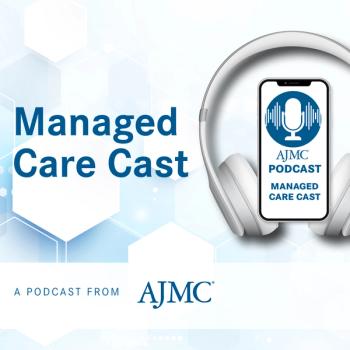
More Diversity Studies Needed for CRSwNP, CRS Heritability Studies
More geographically and racially diverse population cohorts are needed to determine heritability risk in chronic rhinosinusitis with nasal polyps (CRSwNP) and chronic rhinosinusitis without nasal polyps (CRS).
Longitudinal studies in geographically and racially diverse population cohorts are needed to quantify genetic vs environmental risks for
Epigenetic studies in people with CRS indicate the environment may play a role, but these are association studies and do not directly suggest pathogenesis. The present systematic review was conducted because researchers wanted an understanding of the environment-caused changes that bring about host disease predisposition and might help in creating new biomarkers and therapeutics.
Study authors indicated that the goal of this review was to summarize the present evidence on the epigenetics of CRS with a concentration on CRSwNP and emphasize gaps that need more research.
“Epigenetics facilitates insights on the impact of host environment on the genesis of CRS through modulations of host gene expression and activity. Epigenetic mechanisms such as DNA methylation cause reversible but heritable changes in gene expression over generations of progeny, without altering the DNA base-pair sequences,” said the study authors.
Sixty-five studies were included in this analysis. The studies reviewed focused on DNA methylation and noncoding RNAs, consisted of in vivo and/or in vitro changes, and included animal models of CRS.
In general, they discovered dysregulation in pathways/genes that included inflammation, immune regulation, tissue remodeling, structural proteins, mucin secretion, arachidonic acid metabolism, and transcription. The familial predisposition to CRS that has been acknowledged may be a consequence of genetic factors, epigenetic factors, or both, the study authors noted.
Of note, the authors added, a prevailing theme of principal biological pathways entangled in inflammation, cytokine signaling, type 2 response, tissue remodeling, structural integrity, arachidonic acid metabolism, ciliary function, coagulation, and transcription were eminent on these studies.
Most of the studies looked in noncoding RNAs concentrated on micro-RNAs (miRNA) and discovered differences in worldwide expression of miRNA levels. These studies also revealed both known and new targets and pathways, like tumor necrosis factor-α, TGF beta-1, interleukin-10, EGR2, aryl hydrocarbon receptor, PI3K/AKT pathway, mucin secretion, and vascular permeability.
The inhibition of 5-azacytidine, a DNA methyltransferase (DNMT) inhibitor, to TGF beta-1–induced DNMT and EMT might have a possible therapeutic role in CRS. Also, miRNA studies were able to single out TGF beta-1 as a goal of miR-663 in pediatric nasal polyps (NPs). A few other adult miRNA studies have implicated or inspected the role of epithelial–mesenchymal transition (EMT) and/or TGF beta-1. Histone deacetylation (HDAC) studies showed that HDAC inhibitors such as trichostatin could block proliferation in TGF beta-1–induced nasal polyp–derived fibroblasts.
In addition to epigenetic studies, genetic studies that have been reproduced have found polymorphisms in the TGF beta-1 gene to be correlated with CRS even after omitting asthma. Both DNMT inhibitors and HDAC inhibitors have an encouraging role in targeting TGF beta-1–induced EMT in NPs.
“Epigenetic studies on racially and geographically distinct populations are the need of the hour. In addition, studying the epigenetic effects of different environmental stimuli, including different microbes, smoking, and the effects of air pollution (performed in vitro by one study) may lead to further insights on disease etiopathogenesis, as may longitudinal studies,” said the study authors. "Given the availability of drugs that target some of the key molecules implied in CRS pathophysiology, there is a great potential to develop novel therapeutics in CRS targeting these proteins."
Additionally, more research needs to account for confounding factors like asthma and allergic rhinitis.
A limitation of this study is that because of the heterogeneity of sample sizes, methodology, and control tissue used, comparing studies with each other or drawing universal conclusions is difficult. Also, epigenetics might vary based on race, ethnicity, and geographical location, which can be hard to generalize since most of the studies were undertaken in Asia.
“Since epigenetic changes are pharmaceutically reversible, it is possible that future studies can be leveraged to develop targeted therapeutics in CRS,” the study authors concluded.
Reference
Brar T, Marks L, Lal D. Insights into the epigenetics of chronic rhinosinusitis with and without nasal polyps: a systematic review. Front Allergy. Published online May 22, 2023. doi: 10.3389/falgy.2023.1165271
Newsletter
Stay ahead of policy, cost, and value—subscribe to AJMC for expert insights at the intersection of clinical care and health economics.















































